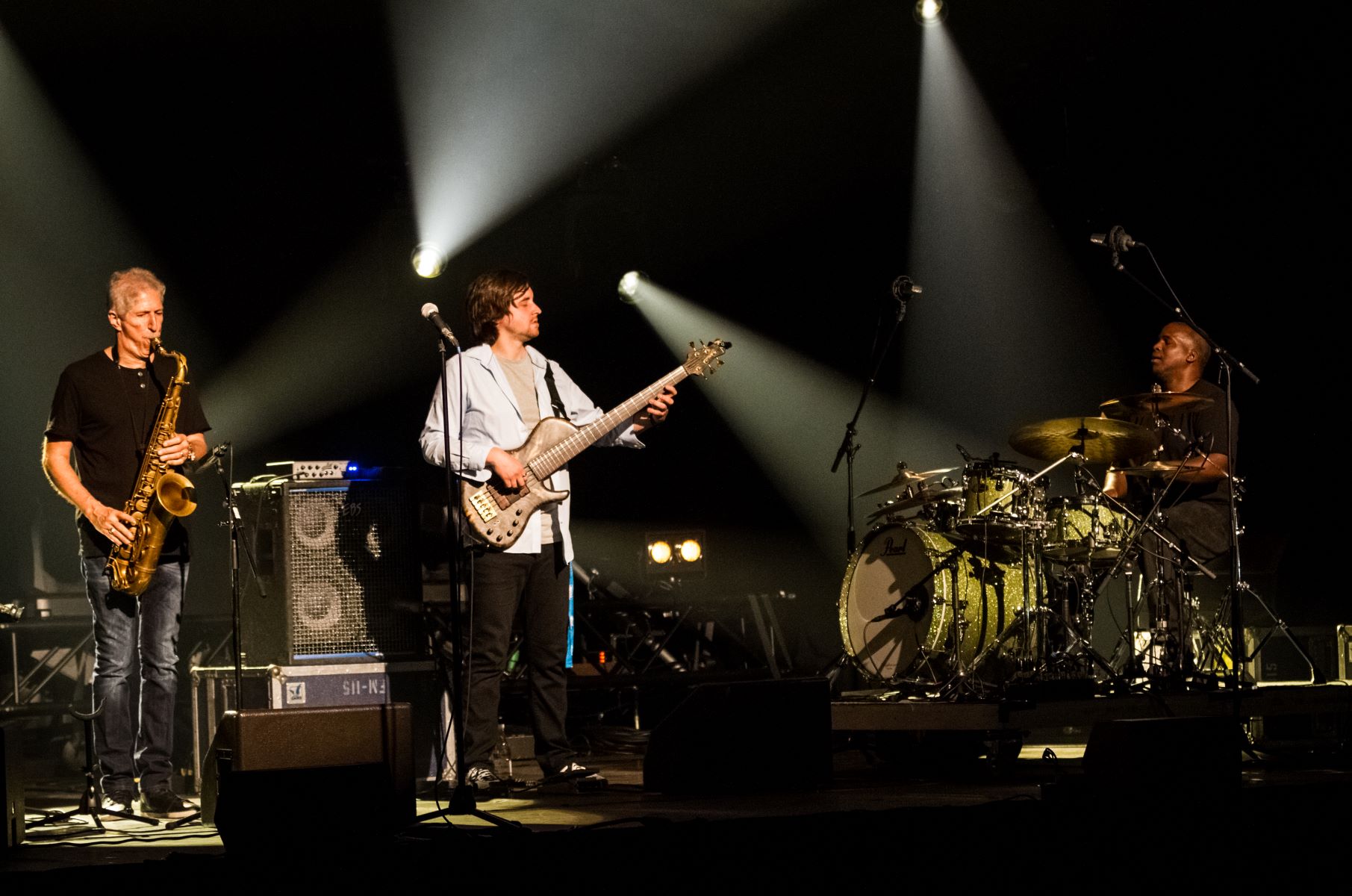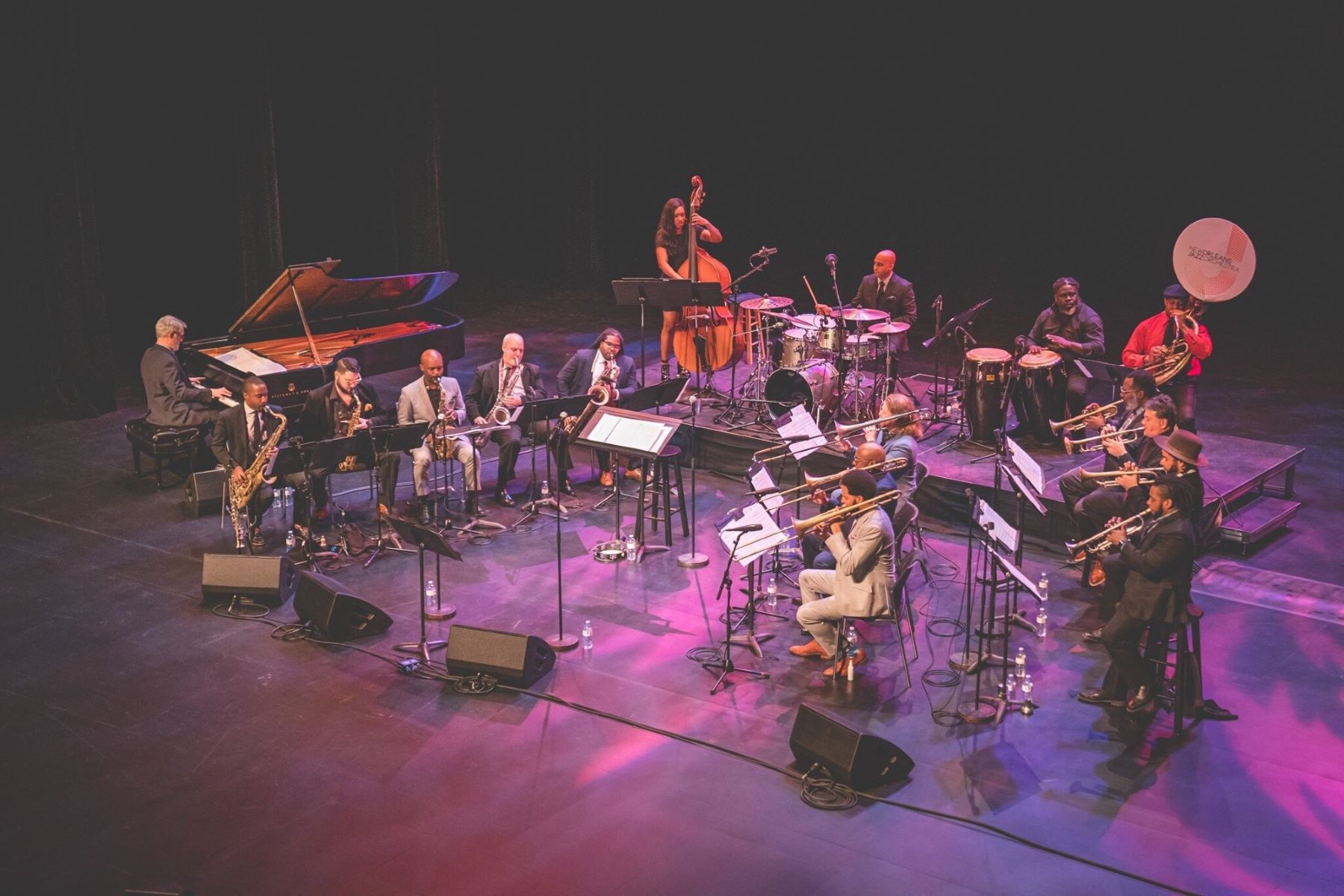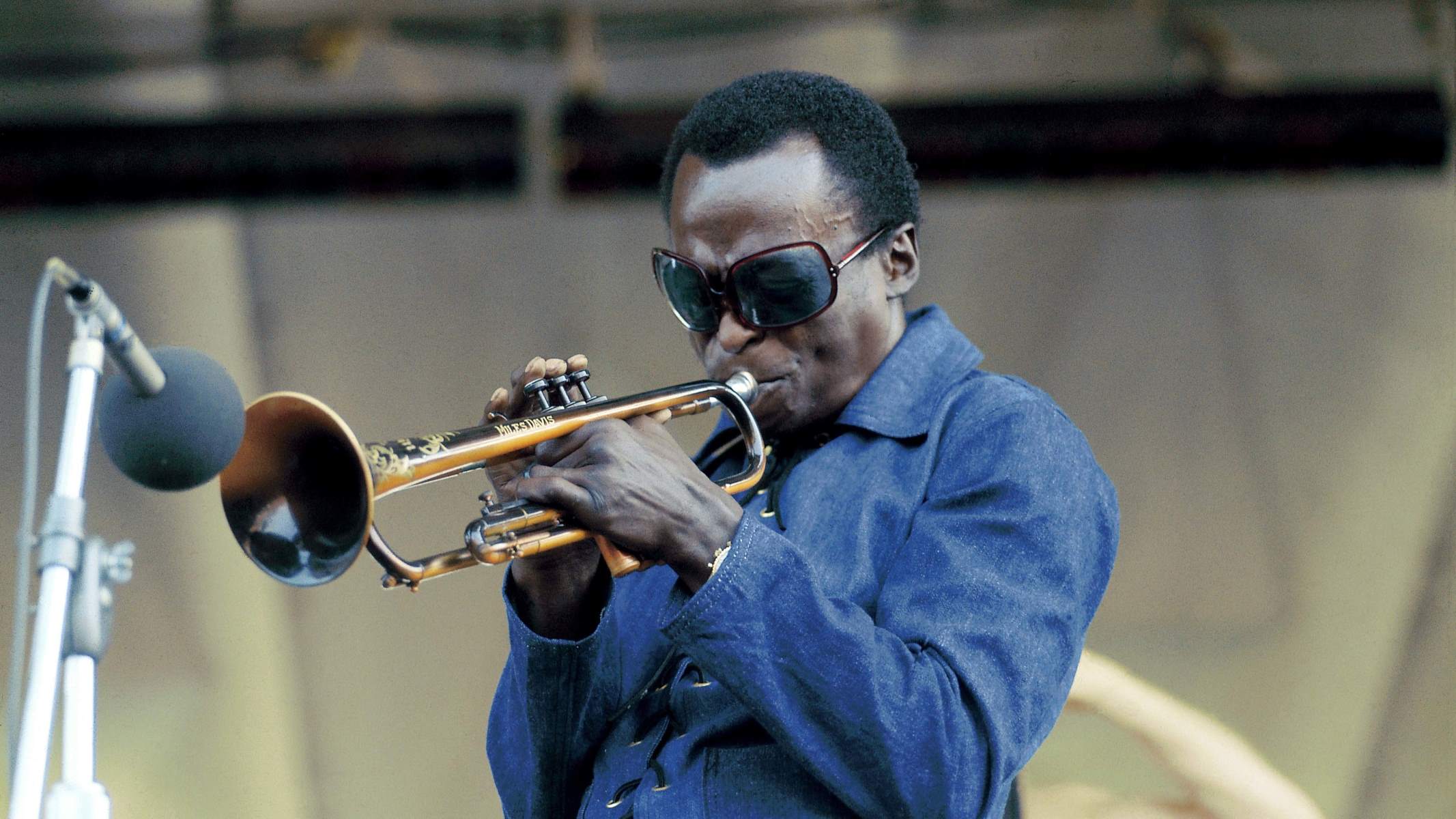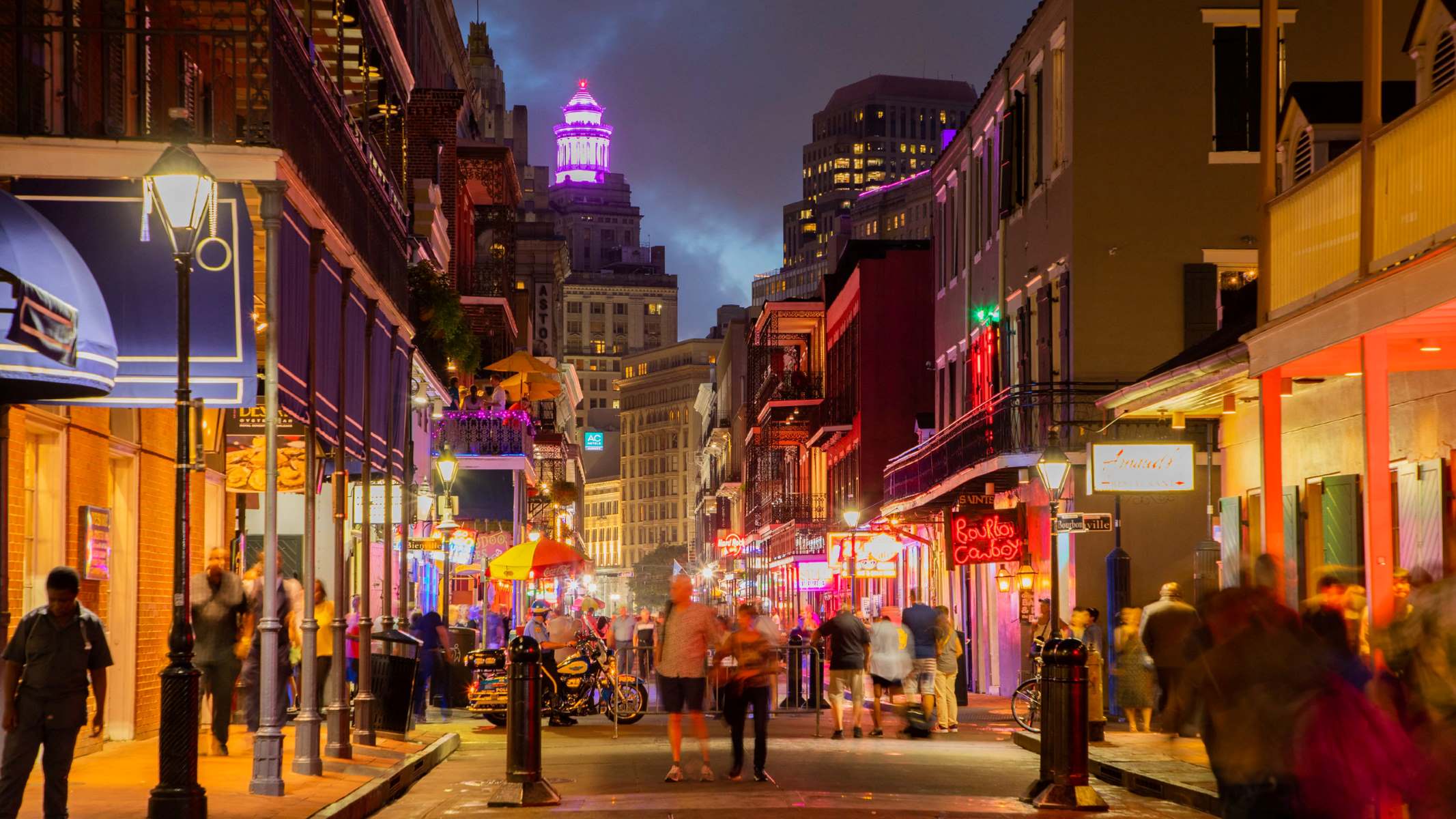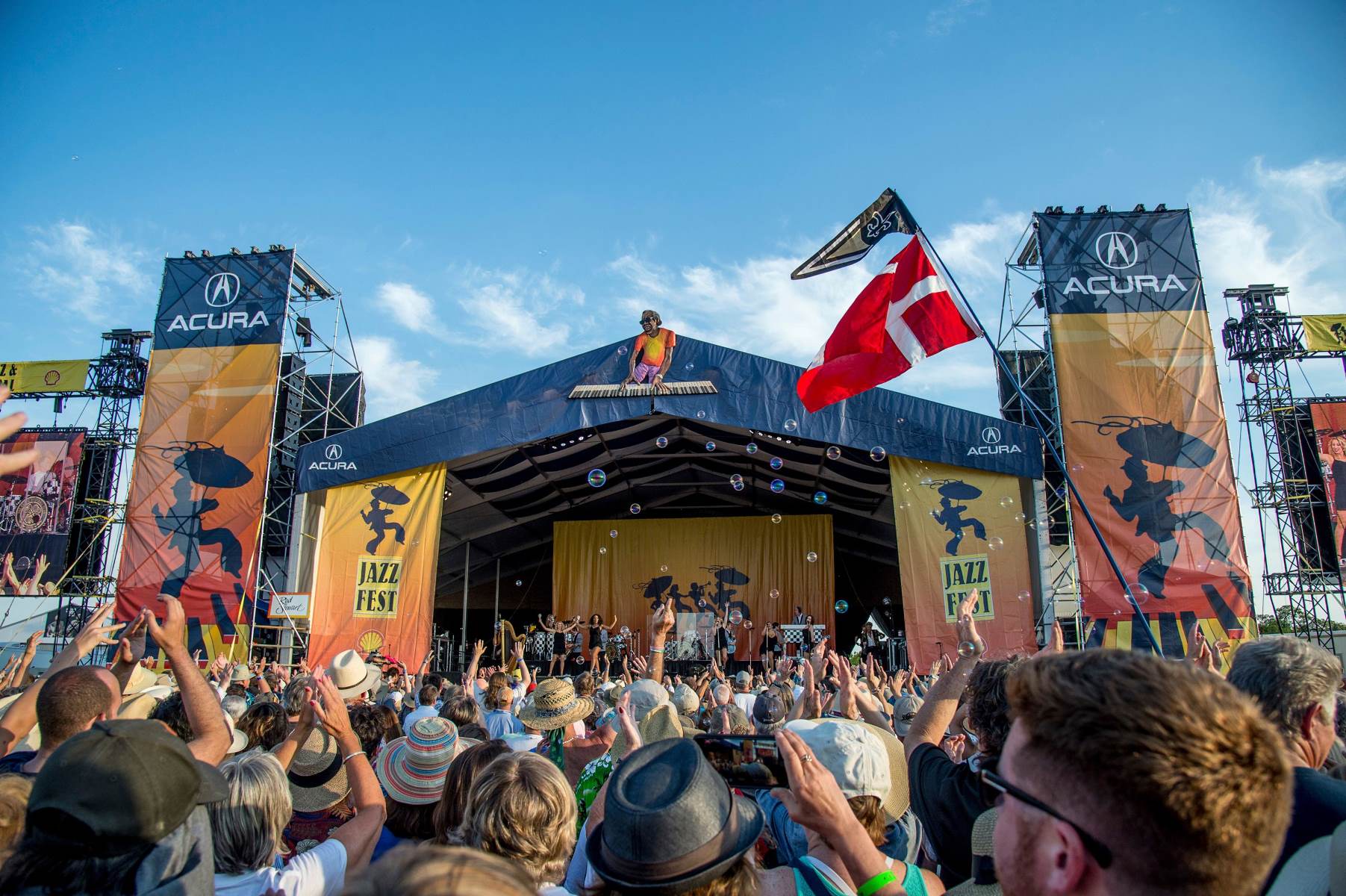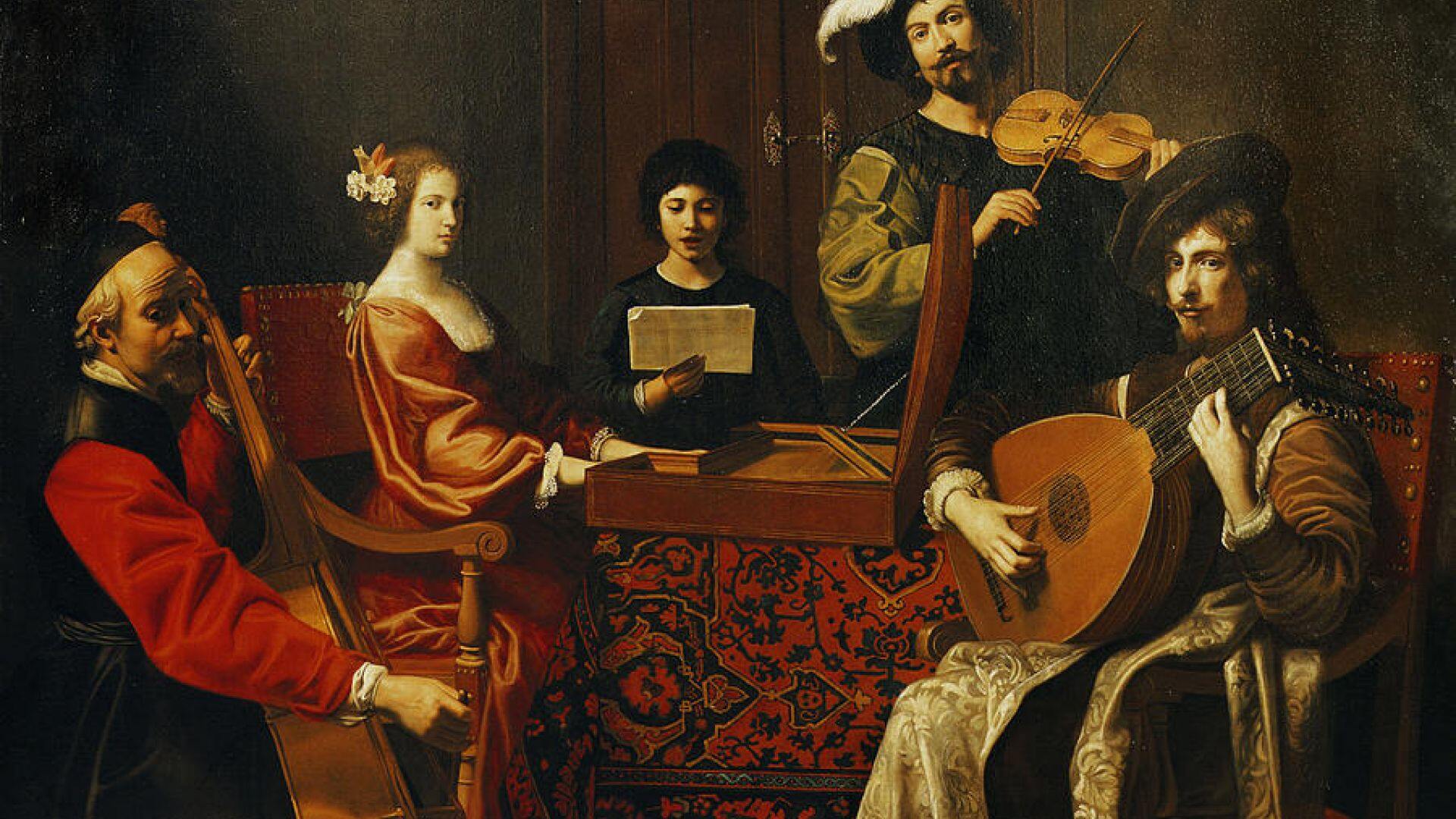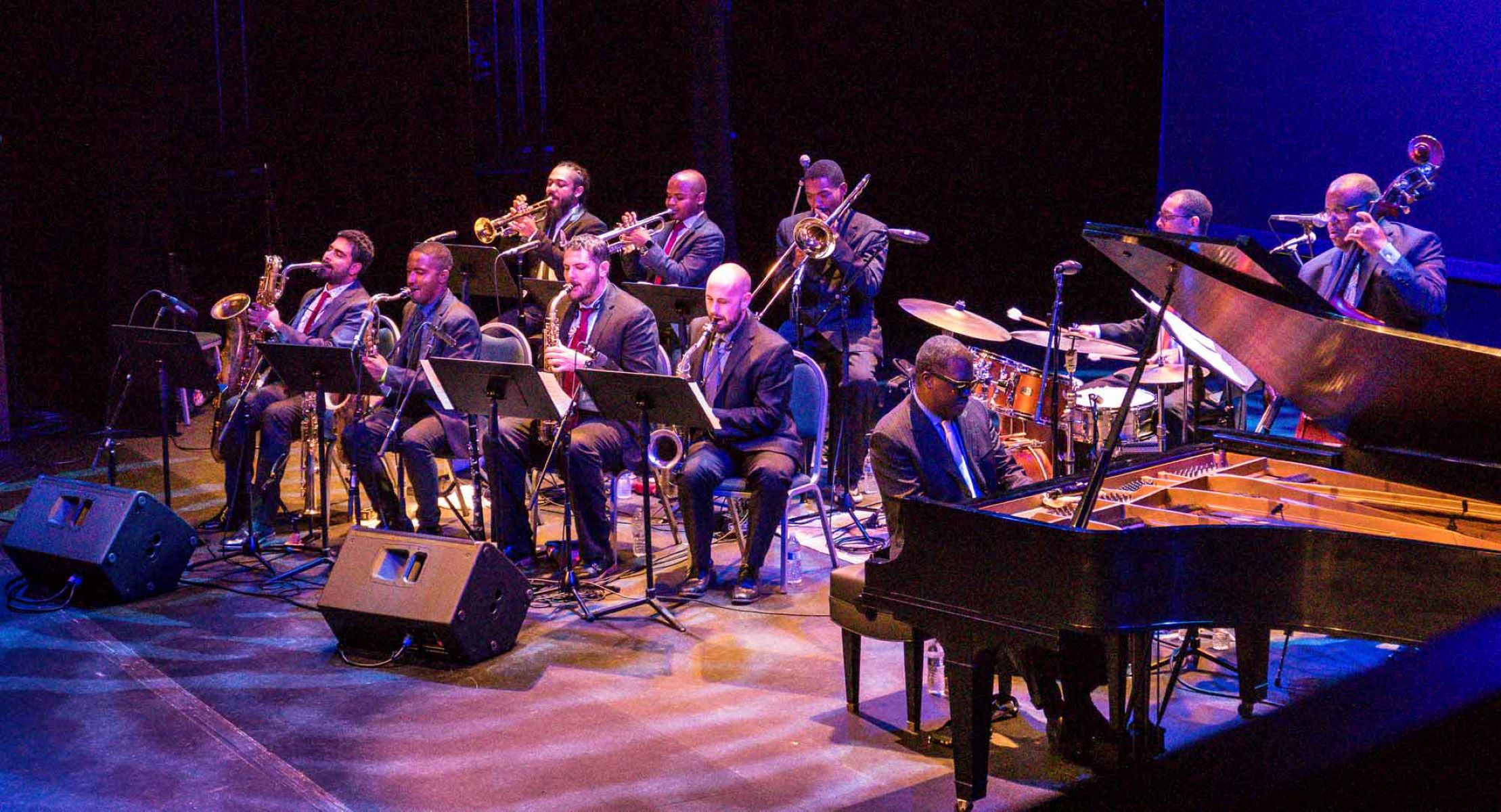

Jazz
What New Style Permeated The Jazz Scene?
Modified: February 24, 2024
Discover the latest jazz style that has taken over the music scene. Get ready to immerse yourself in the mesmerizing melodies and rhythmic beats of this captivating genre.
(Many of the links in this article redirect to a specific reviewed product. Your purchase of these products through affiliate links helps to generate commission for AudioLover.com, at no extra cost. Learn more)
Table of Contents
Introduction
Welcome to the captivating world of jazz! A genre that was born out of the African-American experience in the late 19th century, jazz has since evolved into a rich and diverse musical landscape that continues to enthrall listeners worldwide.
Jazz is not just a genre of music; it is a cultural phenomenon, a form of artistry that has influenced and been influenced by various styles, cultures, and historical events. From its humble beginnings in New Orleans, jazz has spread its wings, integrating new musical elements and creating unique styles that have shaped the music landscape through the decades.
In this article, we will take a journey through the history of jazz and explore the key stylistic developments that have shaped the genre. From the early origins of jazz to the modern-day fusion of various influences, this article will provide a comprehensive overview of the different styles and movements that have permeated the jazz scene.
Whether you’re a jazz enthusiast or just discovering the genre, this article aims to provide a deeper understanding of jazz’s evolution and the impact it has had on the global music scene. So sit back, relax, and immerse yourself in the world of jazz as we embark on this musical adventure!
The Origins of Jazz
Jazz traces its roots back to the late 19th century in the vibrant city of New Orleans, where a unique melting pot of musical traditions and cultural influences flourished. The city’s diverse population, comprised of African Americans, European immigrants, and Creoles, created an environment ripe for musical experimentation and collaboration.
The rhythmic and melodic elements of African music, combined with the harmonic structures of European classical music, laid the foundation for what would become known as jazz. The African influence brought a syncopated and polyrhythmic approach to music, while European traditions introduced harmony and instruments like the piano and brass instruments.
The birthplace of jazz was the bustling neighborhood of Storyville, a district that embraced a vibrant nightlife and a thriving music scene. Musicians from different cultural backgrounds gathered in clubs and brothels, exchanging musical ideas and pushing boundaries.
One of the defining characteristics of early jazz was improvisation. Musicians would often create and develop melodies on the spot, responding to the energy and dynamics of the moment. This element of spontaneity would become a staple in jazz and contribute to its unique and ever-evolving nature.
Early jazz bands were led by influential figures like Buddy Bolden and Freddie Keppard, who became pioneers in the genre. These bands often performed in parades, dances, and social gatherings, spreading the infectious rhythms and melodies of jazz to a wider audience.
As jazz gained popularity, it started to make its way beyond the borders of New Orleans. The Great Migration, which saw millions of African Americans move from the South to urban areas in the North, brought jazz to cities like Chicago, New York, and Kansas City. Jazz quickly became a form of expression for the African American community, reflecting their joy, resilience, and struggles.
Jazz’s roots in African American culture and its ability to capture the essence of the human experience made it a vital art form that resonated with people of all backgrounds. It provided an avenue for creative freedom and expression, transcending racial and social boundaries.
From its humble beginnings in New Orleans, jazz continued to evolve and adapt to new influences and cultural contexts. The next section will delve into the various jazz styles that emerged as the genre spread across the United States and beyond.
Evolution of Jazz Styles
As jazz gained popularity and spread to different regions, it underwent numerous stylistic transformations, reflecting the changing musical landscape and the cultural influences of the time. Each new style brought its own unique characteristics, expanding the horizons of jazz and opening up new avenues of creativity.
One of the earliest jazz styles to emerge was Dixieland, also known as traditional jazz. It retained the lively and improvisational spirit of early jazz while incorporating elements of blues and ragtime. Dixieland bands, with their spirited brass sections and collective improvisation, became popular in the 1910s and 1920s.
In the 1930s, the Big Band era took center stage. Big bands, led by larger ensembles and featuring elaborate arrangements, brought sophistication and a polished sound to jazz. Iconic bandleaders like Duke Ellington and Count Basie became synonymous with this style, showcasing their mastery of composition and orchestration.
As the 1940s rolled around, a groundbreaking movement known as Bebop emerged. Bebop was characterized by its complex harmony, rapid tempo, and intricate improvisation. Musicians like Charlie Parker, Dizzy Gillespie, and Thelonious Monk pushed the boundaries of jazz, challenging traditional structures and embracing virtuosity.
The 1950s and 1960s saw the rise of cool jazz and West Coast jazz. Cool jazz, as the name suggests, had a more relaxed and mellow sound compared to the frenetic energy of Bebop. Artists like Miles Davis and Chet Baker explored modal improvisation and incorporated elements of classical music, creating a more introspective and laid-back style.
Meanwhile, on the West Coast, musicians like Dave Brubeck and Gerry Mulligan found their own unique voice within cool jazz. Combining elements of classical music, West Coast jazz had a distinct sound with its focus on intricate arrangements and a more chamber music-like approach.
As the 1960s unfolded, jazz started to fuse with other genres, giving birth to jazz fusion and jazz-rock. Artists like Miles Davis, Herbie Hancock, and Weather Report embraced electric instruments, funk grooves, and elements of rock to create a brand new sound that appealed to a younger audience.
Alongside these developments, the influence of Latin and Afro-Cuban music found its way into jazz. Musicians like Machito, Tito Puente, and Cal Tjader blended Afro-Cuban rhythms with jazz improvisation, creating a vibrant and infectious fusion that became known as Latin jazz.
During the 1960s and 1970s, free jazz and avant-garde emerged as a radical departure from traditional jazz conventions. Artists like Ornette Coleman and John Coltrane pushed boundaries, exploring unconventional harmony and extended techniques. Free jazz aimed to create a sense of freedom and spontaneity, often disregarding traditional song structures.
As we move into contemporary times, jazz continues to evolve and diversify. Artists today draw inspiration from various genres and cultures, infusing jazz with elements of hip hop, electronic music, and world music. This constant reinvention ensures that jazz remains a vibrant and innovative genre.
This concludes our overview of the evolution of jazz styles. In the next section, we will explore the rise of a pivotal jazz movement: Bebop.
The Rise of Bebop
In the 1940s, a revolutionary movement known as Bebop emerged in the jazz scene, forever changing the course of the genre. Bebop was a direct response to the constraints and commercialization of the swing era, aiming to create a more personal and intellectually challenging form of jazz.
Bebop musicians, including Charlie Parker, Dizzy Gillespie, and Thelonious Monk, sought to break free from the predictable arrangements and showmanship of big band music. They pushed the boundaries of rhythm, harmony, and improvisation, introducing complex melodic lines, rapid tempos, and dissonant chords.
One of the defining features of bebop was the emphasis on individual artistry and virtuosity. Musicians engaged in intricate and lightning-fast improvisations, showcasing their technical prowess and pushing the limits of their instruments. This focus on individual expression opened up new possibilities for jazz as an art form.
Bebop also marked a shift in jazz from dance music to a more cerebral and intellectual form. Its intricate harmonic and melodic structures required active listening and engagement from both the musicians and the audience. Bebop was a music created by and for serious musicians, challenging the listener’s perception of jazz.
Another important aspect of bebop was its association with the African American experience and the struggle for equality. Bebop musicians were often at the forefront of the civil rights movement, using their music as a means of self-expression and protest against racial injustice.
Bebop’s impact extended beyond its musical innovations. It also inspired a new generation of jazz musicians and served as a catalyst for further stylistic developments. The spirit of Bebop can be heard in the subsequent movements such as cool jazz, hard bop, and modal jazz.
Unfortunately, Bebop’s radical nature and complex musical language made it less accessible to the general public, and it remained a relatively underground movement. However, its influence on the evolution of jazz cannot be overstated. Bebop challenged the status quo, inspiring experimentation and paving the way for the future generations of jazz musicians.
Today, Bebop stands as a significant turning point in jazz history. Its innovative approach to improvisation, harmonic complexity, and individual expression continue to inspire jazz musicians around the world. Bebop’s legacy serves as a reminder of the power of artistic expression and the constant evolution of jazz as an art form.
In the next section, we will explore another pivotal fusion in the jazz world: the fusion of jazz and rock.
Fusion of Jazz and Rock
In the late 1960s and early 1970s, a new fusion began to take shape in the world of jazz—a blending of jazz improvisation and the energetic and rebellious spirit of rock music. This fusion of jazz and rock brought together two seemingly disparate genres, resulting in a groundbreaking sound that defied conventions and pushed the boundaries of both styles.
The fusion of jazz and rock was fueled by the revolutionary advancements in electric instruments, amplification, and recording technology. Musicians like Miles Davis, Herbie Hancock, and Weather Report embraced these new tools, incorporating electric guitars, synthesizers, and other electronic instruments into their jazz compositions.
Miles Davis is often credited as one of the pioneers of jazz-rock fusion with his groundbreaking album “Bitches Brew.” Released in 1970, this album showcased a fusion of jazz improvisation, rock instrumentation, and elements of psychedelic music. “Bitches Brew” challenged traditional jazz structures and laid the groundwork for the burgeoning jazz fusion movement.
Jazz-rock fusion also drew inspiration from the rhythmic and harmonic complexities of progressive rock. Musicians experimented with odd time signatures, extended improvisations, and complex compositional structures, blending the virtuosity of jazz with the raw energy of rock.
One of the defining characteristics of jazz-rock fusion was the incorporation of rock grooves and funk rhythms. Bands like The Mahavishnu Orchestra, Return to Forever, and Steely Dan fused jazz harmonies with the infectious rhythms of funk and created a high-energy and groove-oriented sound.
This fusion also allowed for greater experimentation in improvisation. Musicians explored uncharted territories, incorporating elements of free jazz, modal improvisation, and extended techniques into their solos. The spirit of innovation and spontaneity remained at the core of jazz-rock fusion.
Jazz-rock fusion gained popularity in the 1970s, attracting a broad audience that appreciated its fusion of genres and its accessibility to rock fans. The genre reached its peak with the release of several influential albums, including Herbie Hancock’s “Head Hunters,” Mahavishnu Orchestra’s “The Inner Mounting Flame,” and Weather Report’s “Heavy Weather.”
Although the popularity of jazz-rock fusion waned in the 1980s, its impact on the jazz community and the wider music world cannot be overlooked. The fusion of jazz and rock paved the way for other genres like jazz-funk, jazz-pop, and jazz-fusion to flourish and shape contemporary jazz.
Today, jazz-rock fusion continues to inspire and influence musicians across genres. Artists like Snarky Puppy, Robert Glasper, and Kamasi Washington are keeping the spirit of fusion alive, incorporating elements of jazz, rock, hip hop, and electronic music into their compositions.
The fusion of jazz and rock stands as a testament to the constant evolution and adaptability of jazz. By embracing the raw energy of rock and infusing it with the artistry of jazz, this fusion created a musical revolution that broke down barriers and expanded the boundaries of what jazz could be.
Next, we will explore the influence of Latin and Afro-Cuban music on jazz.
The Influence of Latin and Afro-Cuban Music
The influence of Latin and Afro-Cuban music on jazz is undeniable. The rhythmic patterns and infectious grooves of Latin music have been seamlessly integrated into the jazz vocabulary, creating a vibrant and captivating fusion.
The connection between Latin and Afro-Cuban music and jazz can be traced back to the early 20th century when musicians from Cuba and other Latin American countries began to make their mark on the jazz scene in the United States. Their distinctive rhythms and syncopated grooves had a profound impact on the development of jazz.
One of the key figures in this fusion was Mario Bauzá, a Cuban trumpeter and arranger who played a crucial role in the popularization of Afro-Cuban jazz. Bauzá worked closely with jazz legends like Dizzy Gillespie and helped introduce Afro-Cuban rhythms and instrumentation into their music.
Afro-Cuban jazz is characterized by its use of clave rhythms, polyrhythms, and syncopated grooves. The clave, a rhythmic pattern derived from African music, serves as the foundation for many Afro-Cuban compositions. Musicians incorporate elements such as the montuno, a repetitive piano figure, and call-and-response interactions between the rhythm section and the soloist, creating a dynamic and interactive sound.
Latin jazz, a broader category that encompasses various Latin American styles, incorporates elements from Brazil, Puerto Rico, and other countries. Brazilian bossa nova and samba rhythms have made their way into jazz, infusing it with a laid-back and sensual feel. Musicians like Antonio Carlos Jobim and João Gilberto were instrumental in bringing these rhythms to the forefront of jazz.
The influence of Latin and Afro-Cuban music expanded during the 1940s and 1950s with the emergence of the mambo and the cha-cha. Pioneering musicians like Tito Puente, Cal Tjader, and Machito fused Latin rhythms with the improvisational nature of jazz, creating a vibrant and energetic sound that gained popularity both on the dance floors and in jazz clubs.
The fusion of Latin and Afro-Cuban influences with jazz reached its peak during the 1960s with the release of albums like “Manteca” by Dizzy Gillespie and “Soul Sauce” by Cal Tjader. These recordings showcased the seamless integration of Latin rhythms and jazz improvisation, solidifying the place of Latin jazz as a distinct and influential genre.
Today, Latin jazz continues to thrive, with artists like Chucho Valdés, Arturo Sandoval, and the Afro-Latin Jazz Orchestra carrying the torch. The influence of Latin and Afro-Cuban music on jazz is not limited to the rhythmic aspect; it also extends to the harmonic and melodic elements, as musicians explore complex chord progressions and incorporate Latin scales and modes into their compositions.
The marriage of Latin and Afro-Cuban music with jazz has brought a rich and colorful dimension to the genre. It has expanded the rhythmic palette, introduced new harmonies, and provided a platform for musicians to explore the intersection of different cultures and traditions. The enduring influence of Latin and Afro-Cuban music ensures that the fusion with jazz will continue to inspire and captivate audiences for years to come.
In the next section, we will delve into the cool and West Coast jazz movements.
Cool Jazz and West Coast Jazz
In the 1950s, a new wave of jazz emerged on the scene, characterized by its relaxed and understated approach. This movement, known as cool jazz, and its counterpart, West Coast jazz, brought a refreshing change to the jazz landscape, contrasting the high energy and virtuosity of bebop.
Cool jazz was a reaction to the frenetic pace and intense improvisation of bebop. Musicians sought a more relaxed and introspective sound, exploring softer dynamics and subtler melodies. One of the key figures in the cool jazz movement was Miles Davis, whose album “Birth of the Cool” served as a blueprint for this new, more serene style.
Cool jazz incorporated elements of classical music, incorporating modal harmonies and a focus on arrangement and composition. Musicians like Dave Brubeck, Gerry Mulligan, and Stan Getz embraced complex arrangements and intricate counterpoint, creating a more chamber-music-like approach to jazz.
On the West Coast, a parallel movement known as West Coast jazz developed. In contrast to the intense and energetic sound of East Coast jazz, West Coast jazz had a more laid-back and melodic feel. Pioneering musicians like Chet Baker, Art Pepper, and Shelly Manne created a distinct West Coast sound, characterized by its smooth melodies and an emphasis on ensemble playing.
West Coast jazz was heavily influenced by cool jazz, but it also incorporated elements of local Californian culture, such as a relaxed and sun-soaked aesthetic. It was often associated with the famous West Coast jazz scene centered around clubs like the Lighthouse Café in Hermosa Beach and the Haig in Los Angeles.
Cool jazz and West Coast jazz were both popular among a wide range of listeners, appealing to jazz enthusiasts and those new to the genre alike. Their accessible and melodic nature attracted a broader audience beyond the jazz aficionados, contributing to a resurgence of interest in the genre during the 1950s.
The cool and West Coast jazz movements laid the groundwork for further stylistic developments, influencing subsequent genres like jazz-pop and smooth jazz. They showcased a more relaxed and introspective side of jazz, expanding the possibilities for creativity and expression within the genre.
Today, cool jazz and West Coast jazz continue to inspire musicians and serve as a reflection of a particular era in jazz history. Artists like Diana Krall, Chris Botti, and Kamasi Washington carry the torch of these movements, infusing their music with the cool and melodic sound that defined cool jazz and West Coast jazz.
With their distinctive styles and their lasting impact on jazz, cool jazz and West Coast jazz stand as important movements in the genre’s evolution. In the next section, we will explore the avant-garde and free jazz movements that pushed the boundaries of jazz even further.
Free Jazz and Avant-Garde
In the late 1950s and early 1960s, a revolution took place in the jazz world with the emergence of free jazz and the avant-garde movement. These radical movements pushed the boundaries of traditional jazz, embracing experimentation, and challenging conventional musical structures.
Free jazz, pioneered by artists like Ornette Coleman, John Coltrane, and Albert Ayler, rejected the traditional constraints of chord progressions and predetermined melodies. This led to a form of improvisation that was completely free from predetermined structures, where the musicians responded intuitively to each other and the collective energy of the moment.
Free jazz was characterized by its emphasis on collective improvisation, extended techniques, and unconventional use of instruments. Musicians explored new sounds and textures, incorporating multiphonics, harmonics, and non-traditional playing techniques to create a wide palette of sonic expressions.
The avant-garde movement in jazz went even further, embracing unconventional forms of expression and blurring the lines between music and other art forms, such as poetry and visual art. Musicians like Sun Ra, Cecil Taylor, and Eric Dolphy sought to create a sense of freedom and liberation through their music, challenging established norms and conventions.
The avant-garde movement in jazz embraced dissonance, unconventional time signatures, and abstract concepts, pushing the boundaries of what was considered “music.” It was a rejection of traditional structures and a call to explore new realms of artistic expression.
Both free jazz and avant-garde jazz were met with divided opinions. Some hailed them as groundbreaking and visionary, while others saw them as chaotic and inaccessible. Regardless of the reception, these movements pushed the genre forward and expanded the possibilities of what jazz could be.
The impact of free jazz and avant-garde jazz on the jazz community and beyond cannot be overstated. They laid the groundwork for future generations of musicians to explore new territories, delve into unconventional sounds, and challenge artistic conventions.
Today, the influence of free jazz and avant-garde jazz can be heard in the works of artists who continue to push boundaries, such as Kamasi Washington, Mary Halvorson, and Matthew Shipp. Their music embodies the spirit of experimentation and the pursuit of artistic freedom.
Free jazz and avant-garde jazz serve as a reminder of the ever-evolving nature of jazz as an art form. They showed that jazz can transcend traditional boundaries, opening doors to new sonic landscapes and embracing the limitless possibilities of creative expression.
Next, we will explore the fusion of jazz and rock in the jazz fusion and jazz-rock movements.
Jazz Fusion and Jazz-Rock
In the late 1960s and 1970s, a fusion of jazz and rock took center stage, giving birth to the innovative and dynamic genres of jazz fusion and jazz-rock. These genres combined the improvisational nature of jazz with the energy and instrumentation of rock, creating a fresh and exhilarating sound.
Jazz fusion and jazz-rock emerged in response to the changing musical landscape of the time. Musicians began experimenting with electric instruments, incorporating elements of rock, funk, and R&B into their compositions. This fusion brought a new level of intensity and groove to jazz, capturing the attention of both jazz enthusiasts and rock fans alike.
One of the key figures in jazz fusion was Miles Davis. Drawing from his earlier explorations in modal jazz, Davis released seminal albums like “In a Silent Way” and “Bitches Brew,” which showcased a fusion of jazz improvisation, rock instrumentation, and elements of psychedelic music.
Jazz fusion embraced the use of electrified instruments like the electric guitar, electric bass, and synthesizers, which added a new range of tonal possibilities to jazz. Musicians like Herbie Hancock, Chick Corea, and Weather Report incorporated these instruments into their compositions, blending complex harmonies with infectious grooves.
Jazz-rock, on the other hand, emphasized the fusion of rock grooves with jazz improvisation. Bands like the Mahavishnu Orchestra, led by John McLaughlin, and Return to Forever, led by Chick Corea, showcased fiery guitar solos, complex rhythms, and intricate interplay between the rhythm section and soloists.
The fusion of jazz and rock opened up new avenues for improvisation. Musicians explored longer and more elaborate solos, incorporating elements of both jazz and rock improvisation styles. This new approach allowed for more freedom and experimentation, resulting in dynamic and captivating performances.
Jazz fusion and jazz-rock gained popularity throughout the 1970s, attracting a wide audience that appreciated the blend of genres and the combination of virtuosic playing with memorable melodies. The genre continued to evolve, incorporating elements of funk, soul, and world music into its vibrant tapestry.
Although the popularity of jazz fusion waned in the 1980s, its influence on the jazz community and the wider music world persisted. Many contemporary artists continue to draw inspiration from jazz fusion, infusing their compositions with elements of rock, electronic music, and world music.
Artists like Snarky Puppy, Thundercat, and Robert Glasper keep the spirit of jazz fusion alive, pushing the boundaries of the genre and incorporating diverse influences. Their music showcases the versatility and adaptability of jazz fusion, proving that the fusion of jazz and rock remains a dynamic and ever-evolving genre.
Through jazz fusion and jazz-rock, the worlds of jazz and rock collided, creating a fusion that captured the imagination of musicians and listeners alike. These genres continue to inspire and challenge musicians to explore new sonic horizons, ensuring that the fusion of jazz and rock remains a staple of contemporary jazz.
In the next section, we will dive into the diverse contemporary jazz styles that have emerged in recent decades.
Contemporary Jazz Styles
In recent decades, jazz has continued to evolve and diversify, giving rise to a myriad of contemporary jazz styles that reflect the broad range of musical influences and artistic expressions. These styles push the boundaries of traditional jazz while embracing elements from various genres, creating a vibrant and ever-expanding jazz landscape.
One prominent contemporary jazz style is smooth jazz, known for its polished and accessible sound. Smooth jazz incorporates elements of R&B, pop, and funk, providing a melodic and soothing experience. Artists like Kenny G, David Sanborn, and George Benson have popularized this genre, making it a mainstay on radio stations and in popular culture.
Another contemporary jazz style is acid jazz, which emerged in the late 1980s and early 1990s. Acid jazz combines jazz with funk, soul, and hip hop elements, creating a groovy and danceable sound. Artists like Jamiroquai and The Brand New Heavies brought this genre to the forefront, infusing it with their own unique style and energy.
Contemporary jazz also includes the genre of jazz-funk, which blends the complexity of jazz improvisation with the infectious rhythms of funk. Musicians like Herbie Hancock, The Headhunters, and Roy Ayers have embraced this style, creating energetic and funky compositions that get audiences moving.
Alongside these fusion genres, the tradition of straight-ahead or mainstream jazz continues to thrive. Straight-ahead jazz pays homage to the classic jazz standards and the art of improvisation. Musicians like Wynton Marsalis, Diana Krall, and Brad Mehldau carry on the tradition while infusing it with their own unique interpretations and musical personalities.
The influence of Latin and Afro-Cuban music continues to resonate in contemporary jazz as well. Afro-Cuban jazz, Latin jazz, and Brazilian jazz add a vibrant and rhythmic flavor to the genre. Artists like Chucho Valdés, Eliane Elias, and Poncho Sanchez merge the rich traditions of Latin American music with jazz improvisation, creating a fusion that is both captivating and soulful.
Jazz fusion has also evolved in the contemporary jazz scene, blending jazz with elements of rock, electronic music, and world music. Musicians like Kamasi Washington, Robert Glasper, and Snarky Puppy breathe new life into fusion, incorporating modern production techniques and exploring genre-bending compositions.
Additionally, contemporary jazz has seen the rise of innovative and boundary-pushing artists who defy traditional categorization. These musicians incorporate elements of avant-garde, experimental, and electronic music, creating a cutting-edge and forward-thinking approach to jazz. Artists like Esperanza Spalding, Ambrose Akinmusire, and Christian Scott aTunde Adjuah are known for their exploration of unconventional sounds and their ability to challenge listeners’ expectations.
Contemporary jazz styles continue to emerge and evolve, reflecting the ever-changing musical landscape and the diverse influences that shape our world. These styles demonstrate the adaptability and resilience of jazz as an art form, proving that it remains a vital force in the modern music scene.
As we witness the continued growth and innovation in contemporary jazz, it is an exciting time to explore the vast array of styles and immerse ourselves in the creative possibilities that this genre offers.
To conclude, jazz has proven its ability to transform and adapt while remaining true to its improvisational and innovative spirit. Whether it’s embracing new genres, honoring tradition, or pushing the boundaries of experimentation, contemporary jazz styles reflect the ongoing evolution of this dynamic and ever-evolving genre.
Conclusion
Jazz is a genre of music that has captivated listeners for over a century. From its humble beginnings in New Orleans to its influence on a global scale, jazz has continuously evolved and diversified, absorbing different cultural influences and pushing the boundaries of musical expression.
We have explored the rich tapestry of jazz history, from its origins in African rhythms and European harmonies to the emergence of distinctive styles such as bebop, cool jazz, and West Coast jazz. We have witnessed the fusion of jazz with rock, Latin and Afro-Cuban music, and the avant-garde, leading to the birth of new and exciting genres like jazz fusion and free jazz.
Contemporary jazz styles continue to push the boundaries of the genre, incorporating elements from a wide range of musical traditions and genres. Smooth jazz, acid jazz, jazz-funk, and straight-ahead jazz represent just a few of the diverse expressions within the contemporary jazz landscape.
Throughout its history, jazz has been a reflection of cultural movements and social changes. It has been a source of inspiration, a platform for artistic expression, and a means of connecting diverse communities through the universal language of music.
As jazz continues to evolve, it remains a dynamic and ever-changing genre, nurturing a rich tapestry of styles and influences. From the classic standards to the avant-garde experiments, jazz serves as a testament to human creativity and artistic exploration.
Whether you are a long-time jazz enthusiast or a newcomer to the genre, there is always something new to discover within the world of jazz. Its melodies, rhythms, and improvisations hold the power to transport us, evoke emotions, and unite us in a shared musical experience.
So, let us embrace the diversity and innovation of jazz, celebrating its ability to adapt, evolve, and inspire. Let us delve deeper into its history, explore its numerous styles, and appreciate the incredible artistry of the musicians who continue to push the boundaries of jazz.
As we navigate the ever-changing musical landscape, let jazz be a constant reminder of the boundless possibilities of human expression and the transformative power of music. Jazz is an art form that continues to shape and be shaped by our world, and its legacy will undoubtedly endure for generations to come.



